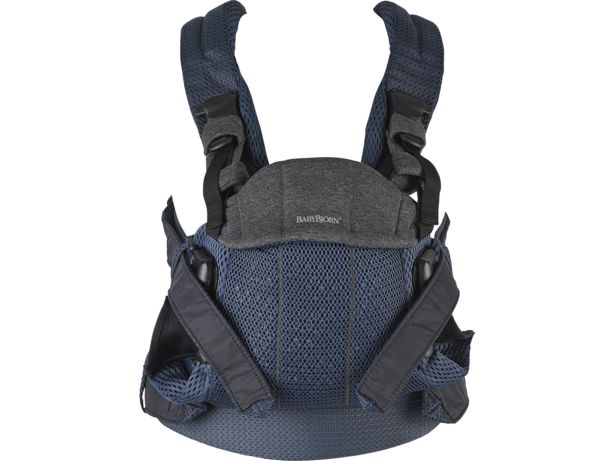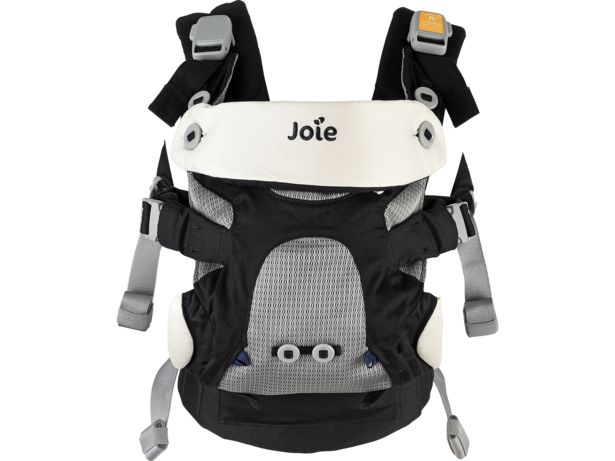How we test baby carriers and slings

Our baby carrier and baby slings reviews are unique. They're based on a combination of different elements: safety and durability (based on British standards) and comfort assessments from highly experienced ergonomists.
These are then combined with the results from user trials. We used two different groups of parents and children, to take into account their experiences of using the slings on a day-to-day basis.
We’ve done all of this to bring you the lowdown on the best baby slings and carriers to choose.
Our reviews answer crucial questions about baby slings and baby carriers:
- Is the sling or carrier safe and durable?
- Is it comfortable for my baby and me?
- Is it easy to get on and off?
- How clear are the instructions?
- Should I buy it?
Compare our baby carriers and slings reviews to discover the best and worst models, or read on to find out more about our testing.
What are Which? Best Buy and Great Value baby carriers and slings?

Best Buys
The baby carriers and slings that impress most in our tests are made Best Buys. These models must score at least 85% in our tests, but you should still read to our reviews to find out if there are any factors that might impact your buying decision.
Total test scores can be limited if there is evidence of any durability or safety issues.
Great Value baby carriers and slings
Some baby carriers and slings are also given a Great Value recommendation. These models perform well, scoring 70% or more, and are at least 20% cheaper than the average price of the baby carrier or slings we've tested. Some Great Value baby carrier and slings also score well enough to be Best Buys too.
See our round-up of the best baby carriers and slings.
Is the baby sling or baby carrier safe and durable?
Each baby sling and carrier we review has been pulled and jolted, and examined for choking hazards and any trailing cords that could pose a risk to a baby. We scrutinise the instructions to make sure they contain all the relevant safety advice, and we run a series of durability tests to find out which slings and baby carriers will keep your little one safe and secure without breaking.
Durability tests include strapping the baby carrier to a test dummy, loading it with a 15kg test baby dummy, and then jolting it up and down around for around 50,000 cycles to check the carrier remains secure when it’s being used. This is designed to replicate the most dynamic movement you could make when using it - think going down the stairs at quite a pace.
We also check the openings where your baby’s legs sit, to make sure the gaps aren’t so big that you could accidentally drop your baby through them when putting him or her into the carrier; and we check for any parts that could strangle or become detached and could pose a choking hazard for your baby.
Is it comfortable for you and your baby?
When using a baby carrier or a baby sling, it’s important that your baby is carried in the optimum position for safety and comfort – both theirs and yours. An uncomfortable baby carrier or baby sling can cause aches and pains that could put you off using it all together.
We put our ergonomics experts to work assessing each sling and baby carrier for comfort for the passenger and the wearer. These experts have more than 15 years’ experience of assessing baby and child products. Each baby sling and carrier is examined to see how supportive it is for your little passenger. This includes support for the head, back and spine, and the position your baby’s pelvis is held in.
We then get to work assessing how well each baby sling or carrier fits the wearer. Based on a range of body sizes for both men and women, and looking at all of the product’s different ways it can be worn, we check padding, how easy the adjustments are to get a good fit, weight distribution and lumbar support.
Who wants a tricky-to-use baby carrier or sling that you have to fight with to get on or off, or one that comes with confusing instructions? We get the lowdown from our parent-tester trials and expert assessments to reveal just how easy the carriers and slings are to get on for the first time, and then to master and use every day. We also look out for features that make a carrier or sling easier to use.
How clear are the instructions?
A good set of instructions is key to using a baby carrier easily and safely. So we look at how easy each of the carrier’s instructions are to get to grips with. We mark them on several factors, including clarity and accuracy, and how often you need to consult them until you can confidently fit the product without referring to them.
We also examine the instructions to see how many are missing required safety information, such as warnings about using the sling when bending over and wearing the sling around hazards at home.

How we score baby carrier and slings
To help you decide if you should buy a baby carrier or sling, we take the results of the tests above and combine them to give each baby sling or carrier a total test score, so you can easily see which are the best and worst, and directly compare models with each other.
The score we give each sling or carrier is made up of a combination of the elements of our unique tests, excluding price, and is broken down as follows:
50% - ergonomic and expert assessments – this includes:
- 20% - comfort and support for child
- 15% - comfort and support for wearer
- 10% - ease of use
- 5% - instructions
50% - parent-tester user trials – this includes:
- 7.15% - ease of placing child into carrier
- 7.15% - ease of putting the sling/carrier on
- 7.15% - ease of releasing buckles/fastenings
- 7.15% - ease of removing carrier
- 7.15% - comfort of wearing carrier with your child in it
- 7.15% - comfort of your child in the carrier
- 7.15% - overall satisfaction with the carrier



